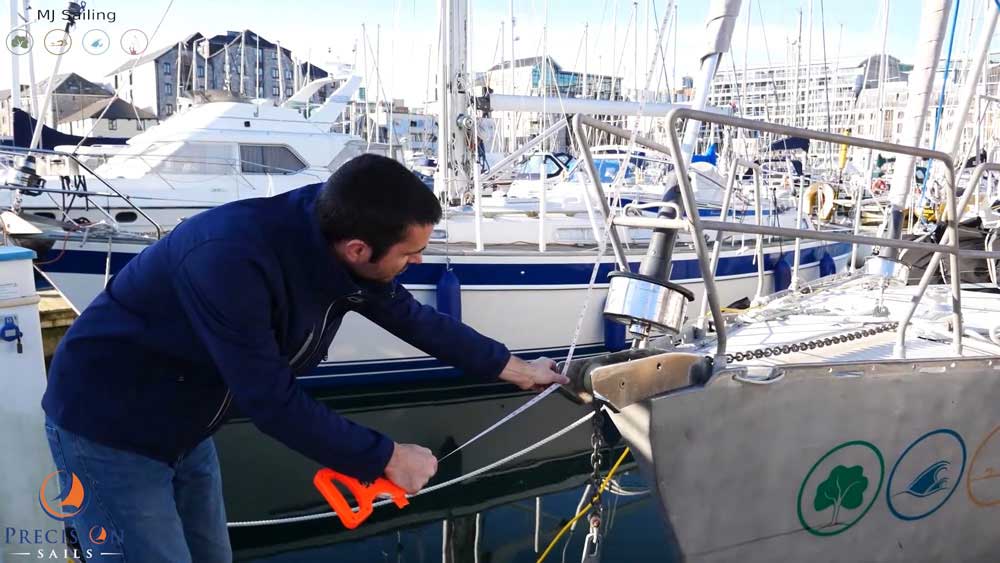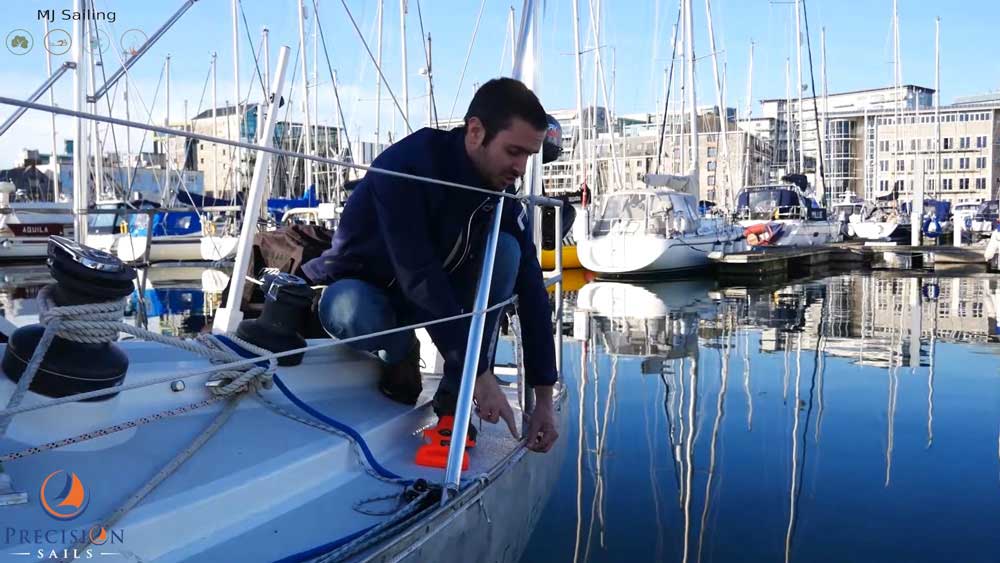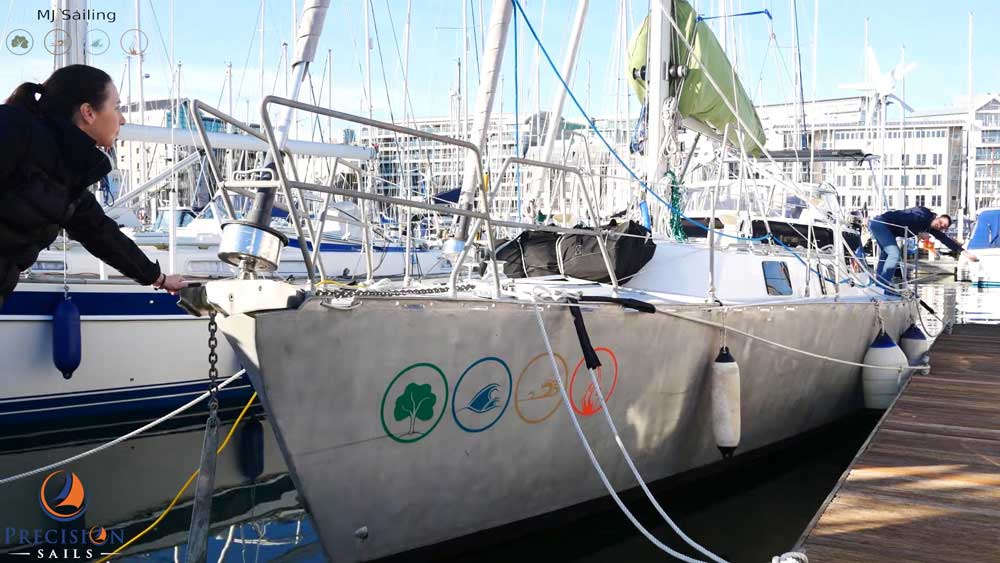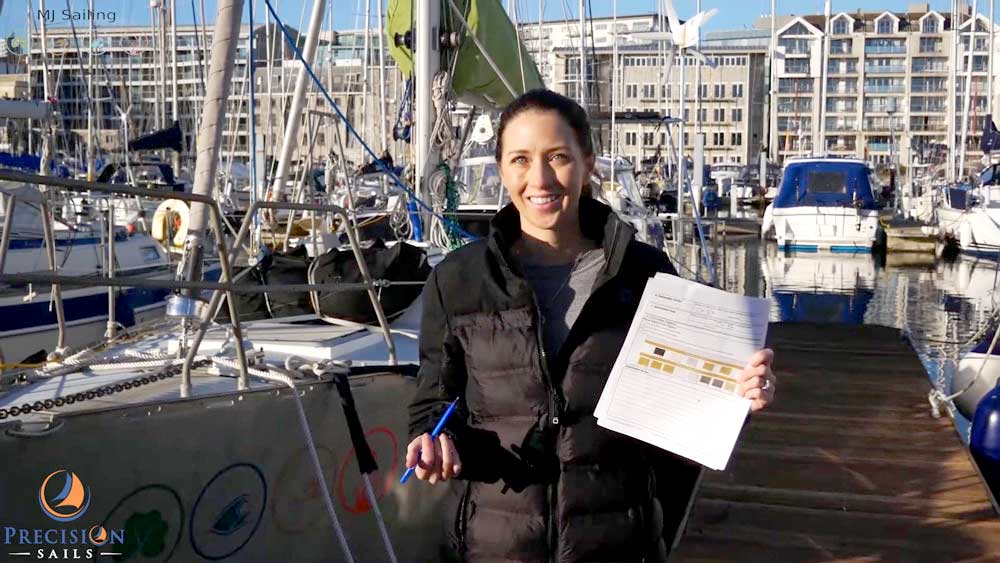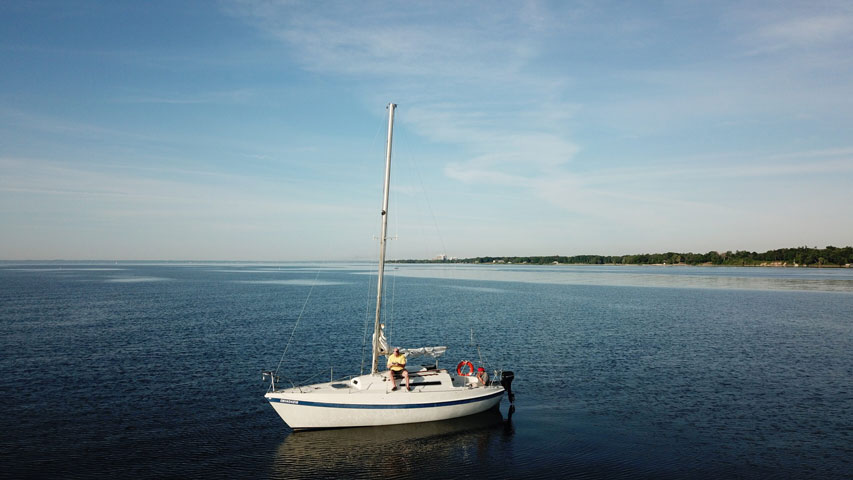Introduction
Matt and Jessica from MJ Sailing are going to dive into the Precision Sails Spinnaker Measurement form and show you how easy it is to measure for a new spinnaker by taking measurements for their boat, Elements of Life, a 1983 Trisalu.
“…we have done both our mainsail and headsail through precision and although those forms are very simple it did require some measurements. But for the spinnaker, it’s only a few measurements that need to be taken. So it is a very simple process…”
Section 1. Halyard Location

These measurements help the designers to determine the size of your spinnaker and properly monitor its shape during design.
Location of Spinnaker Halyard
Does your halyard come out of the top of the mast (Masthead) or slightly above the forestay (Fractional)?
“…basically does it come out of the top of the mast? or do you have a fractional rig and it comes out a bit lower…”
Measure Your Max Hoist
Attach a tape measure to your Spinnaker Halyard and hoist until it stops. Measure to the deck/bowsprit that your track will run to.
Quick Tip: Tie a retrieval line to your halyard so that you can recover your halyard if the tape snaps!
Section 2. Sheeting The Sail

These measurements are used by your designer to properly sheet the sail and monitor the shape of the spinnaker in our design software.
Block Position For Clew
Is your sheeting block adjustable or fixed? Select the appropriate box on the form.
“…on Element’s we have a perforated toe-rail, so we can adjust the position and the best location for our winch…”
Bowsprit
If you have a bowsprit measure from your fore-stay attachment point on the deck to the sheeting block location you intend to use for your spinnaker sheets.
If you do not have a bowsprit but are going to be attaching your block to your anchor roller than mark the location of the block you are going to install and measure from that point to the sheeting position along your toe-rail.
Section 3. Spinnaker Sock
A spinnaker sock is a great tool for helping to manage the unruly spinnaker. By constructing a sock based on your design you will get the perfect length and the ‘toilet-bowl’ will allow for you to release and douse your spinnaker single-handed with ease.
Learn more about spinnaker socks.
Section 4. Spinnaker Furler

Spinnaker Furlers are a great tool for the short-handed sailor as it simplifies the function of raising and dousing the spinnaker to a function that can be carried out at the cockpit.
If you will currently or in the future will be using a spinnaker furler please provide us with the Furler Model.
Section 5. Spinnaker Pole
A Spinnaker pole is used to help support and control a symmetrical spinnaker. However, they can be used on an asymmetrical as well.
“…now the spinnaker we’re looking for is a cruising chute, an asymmetrical spinnaker. Which does not typically use a pole so we are not going to be using a pole for that…”
If you will be using a spinnaker pole select the appropriate box on the form and provide your pole length.
Section 6. Spinnaker Color(s)
A variety of available spinnaker colors and panel configuration makes designing your spinnaker fun and unique. Spinnakers can be designed as single or multi colored.

Standard Spinnaker colors such as black, natural, dark blue, red, and green are readily available for your design.
Custom Colors such as orange, coast gold, yellow, light blue, ocean blue, navy, purple, and grey are available as well but need to be ordered in.
Notes And Photos
Don’t forget to write notes and attach photos of your boat to your form. Knowing what makes your boat unique or being able to see your specific rig helps the designers to optimize the design of your spinnaker.
